By Kirsten Coachman
At the outset, “Saltburn” may not look like your typical vampire movie, as it’s not quite giving “Twilight” vibes, but as writer/director Emerald Fennell explains, that’s exactly what it is. She shared an anecdotal conversation between herself and the film’s cinematographer, Oscar winner Linus Sandgren (“La La Land”), who asked her what word comes to mind when she thinks of her film.
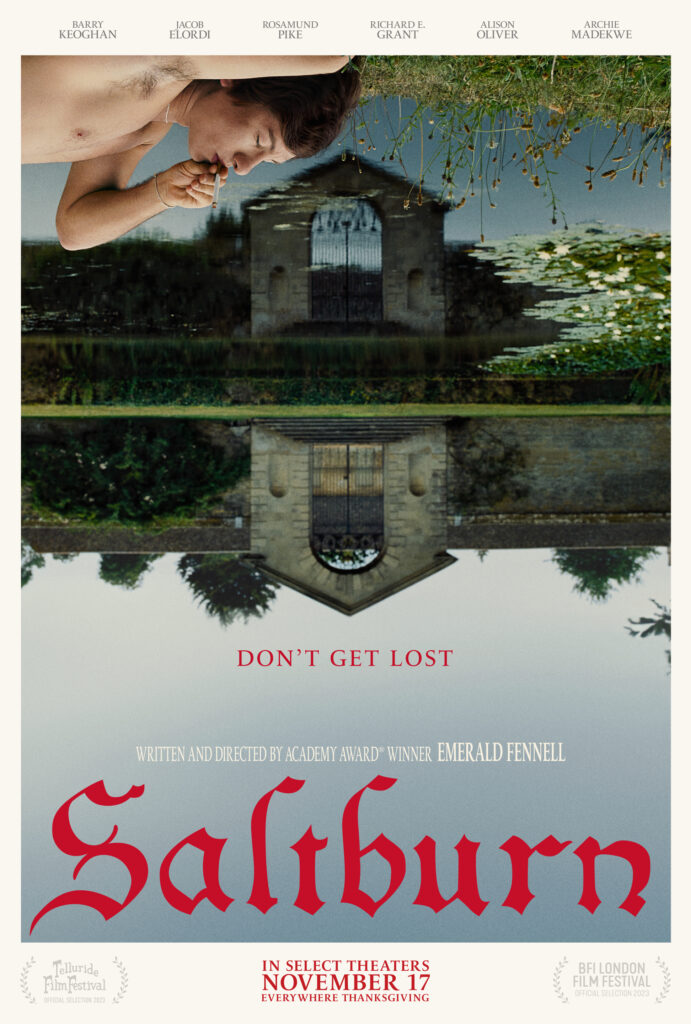
“And I said, ‘vampire.’ It’s a vampire movie. And we don’t know who the vampire is,” Fennell told Art U News during a media roundtable this past October. “And even at the end, we don’t really know who the vampires are and that everyone’s kind of sucking something, you know?”
Fennell was in town last month as part of the Mill Valley Film Festival; “Saltburn” was screened as a spotlight film, and she was honored with the Mind the Gap award for Filmmaker of the Year.
“Saltburn,” opening in theaters this week, is Fennell’s highly anticipated follow-up film to 2020’s “Promising Young Woman,” which received five Oscar nominations in 2021, including Best Picture. Fennell walked away with an Oscar win for Best Original Screenplay.
Her debut feature sparked plenty of debate and discourse—especially over the film’s shocking final act—and with “Saltburn,” Fennell is poised to fan the flames regarding power and privilege.
Set in the early aughts, “Saltburn” is centered on Oliver Quick (Barry Keoghan, “The Banshees of Inisherin”) who, while studying at Oxford University, finds himself taken with the confident and ever-popular Felix Catton (Jacob Elordi, “Euphoria”), who invites his seemingly quiet schoolmate home during break to his family’s sprawling estate, Saltburn. Also starring Rosamund Pike, Richard E. Grant, Carey Mulligan, Archie Madekwe, and Alison Oliver, “Saltburn” is a lush portrait of unrelenting obsession and power over the course of a salacious summer.
The dreamworld of “Saltburn”
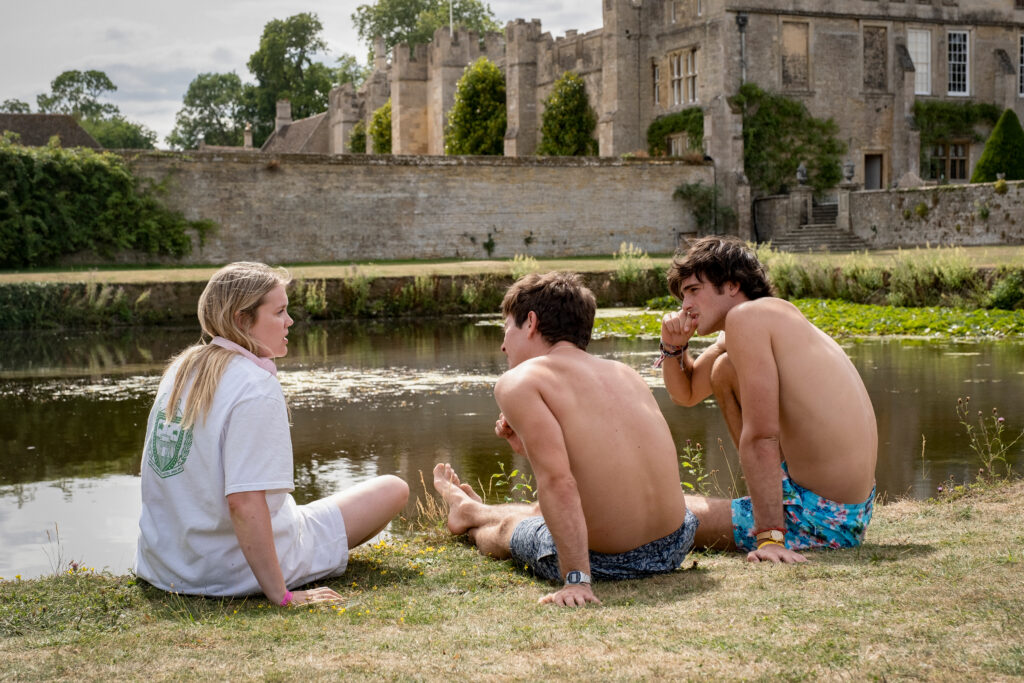
When it comes to writing, many writers tend to have a specific process of their own design. And this is not dissimilar for Fennell, who revealed that she spends a good deal of time in the “daydream worlds” of her films before any words hit the page. In the case of “Saltburn,” Fennell had been meditating on her idea for her newest film for around eight years.
“It’s years and years of living in an imaginary world and being in the scenes and being in the rooms and being with those people,” shared Fennell. “And bit by bit, people appear, they disappear. And then some people stay; it’s like a doll’s house or something, it just exists.”
In figuring out the project that would follow in the successful steps of “Promising Young Woman,” Fennell explained that it’s less a choice and more of what reveals itself to her. And Oliver Quick was making his presence known.
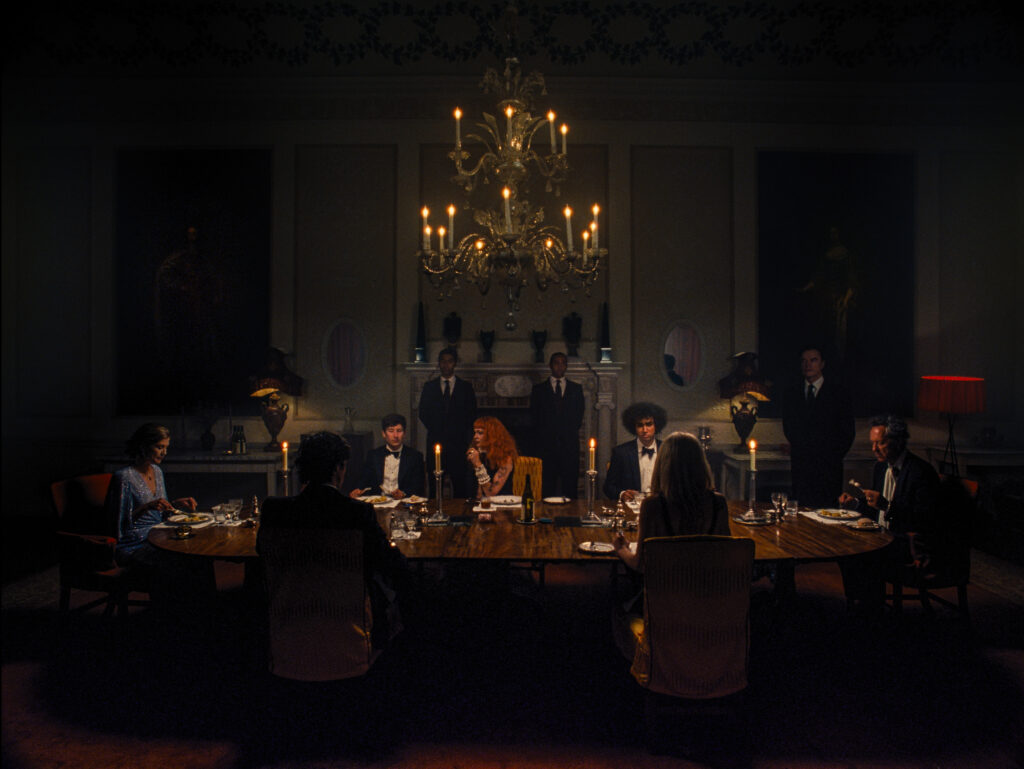
“I kind of know it when I see it—that that’s gonna be the next thing,” she explained. “And yeah, I think Oliver was just incredibly persistent, as is his wont. So, it wasn’t really a choice. It was the next thing.”
Once she has the film finished in her head, that’s when it’s time to write. Fennell says that she’s “very, very lucky” that part of her process is going away to write without anyone knowing the contents of what she’s working on.
“Then they know what it is when the script arrives,” she said. “It gives me a lot of freedom to decide, to just feel what the next thing is rather than make the strategic decision, which I don’t think I’d be very good at.”
Creating the aesthetic
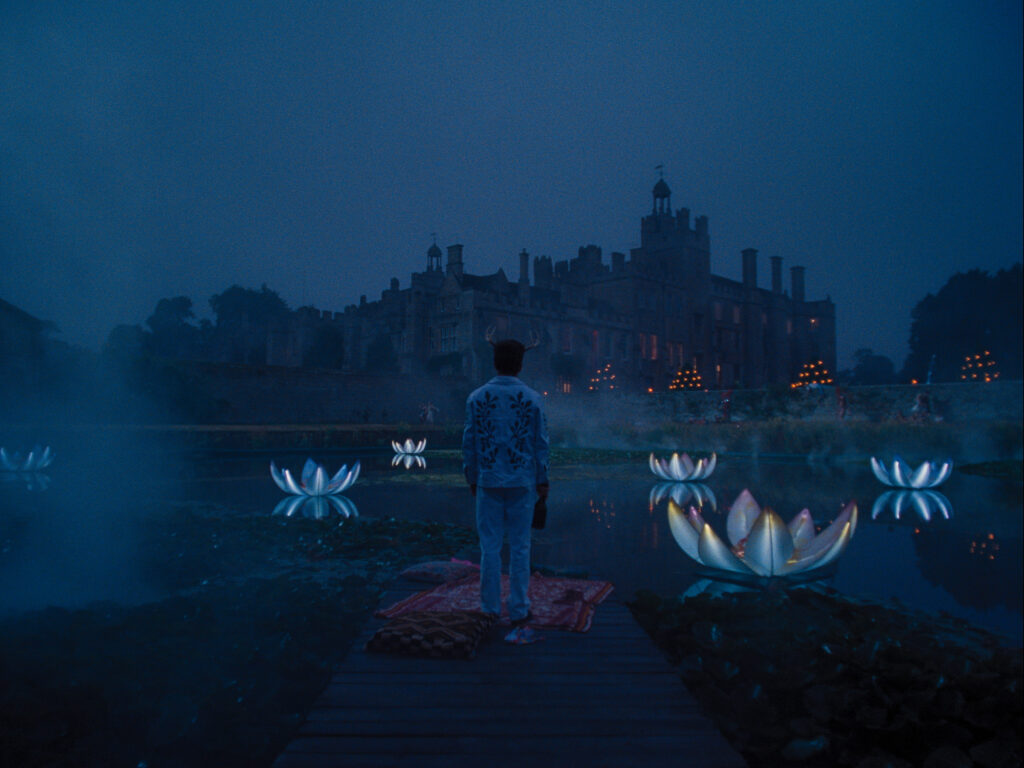
Helping Fennell bring her daydream world to the screen was Sandgren. Together, the two looked at a variety of visual references, including the Merchant Ivory and artists such as Caravaggio, Thomas Gainsborough, and Joshua Reynolds.
“[T]his is a movie about beauty, about the fetishization of beauty and wanting, and so it had to be really beautiful,” said Fennell.
Part of the beauty of the film comes from Sandgren’s use of light and shadow to show certain moods and emotions throughout the film. There’s a scene early on where Oliver leaves a pub after being ignored by Felix, and he’s shown flooded in red and blue lights as if to paint the character’s flux of emotions in real-time.
The use of shadow not only created some stunning moments on screen but also helped shape the film’s gothic feel. Fennell shared that beyond the light and color, it was about capturing the texture of the world of “Saltburn.”
“It’s how does light hit velvet? How does light hit moire silk? How does it hit hair? Skin?” said Fennell. “When you are very, very, very close and you are looking at people’s pores, and you are looking at their sweat and their hair follicles and their razor burns, how does it hit that? And where are we straying too far into where something feels so stylized that it’s alienating? You’re always … towing that line. I don’t want anything to feel just like a beautiful art piece. It’s got to feel earned.”
Finding Oliver and Felix
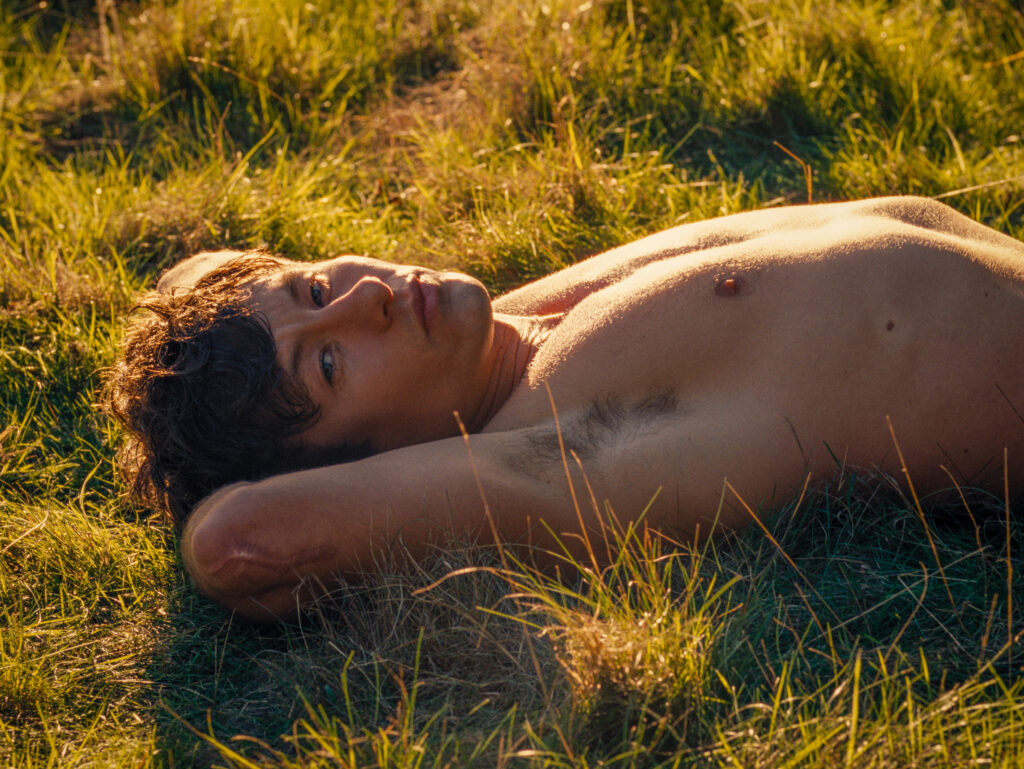
Having the right actors in place to play Oliver and Felix would prove to be key, as both actors would need to bring specific attributes to their characters. While casting her leading men, Fennell knew upfront that the Oscar-nominated Keoghan was the actor she wanted to play Oliver.
“[Barry] didn’t audition,” she revealed. “I’m so familiar with his work that I knew that it needed somebody who was completely singular and who we would understand why, who had a kind of charisma that you would understand how he would be accepted into a very elite world.”
Describing Keoghan as “compelling” and “enigmatic,” the writer/director further explained that when you watch the versatile actor’s performances, there is an aspect to him that makes one watching him on screen want to “lean in.”
“[W]ith every performance he does, you can read so many different things into everything he does,” said Fennell. “And that was really important for Oliver.”
Casting the character of Felix, on the other hand, proved to be a challenge. His character needed to have both a specific look and a disarming quality to him.
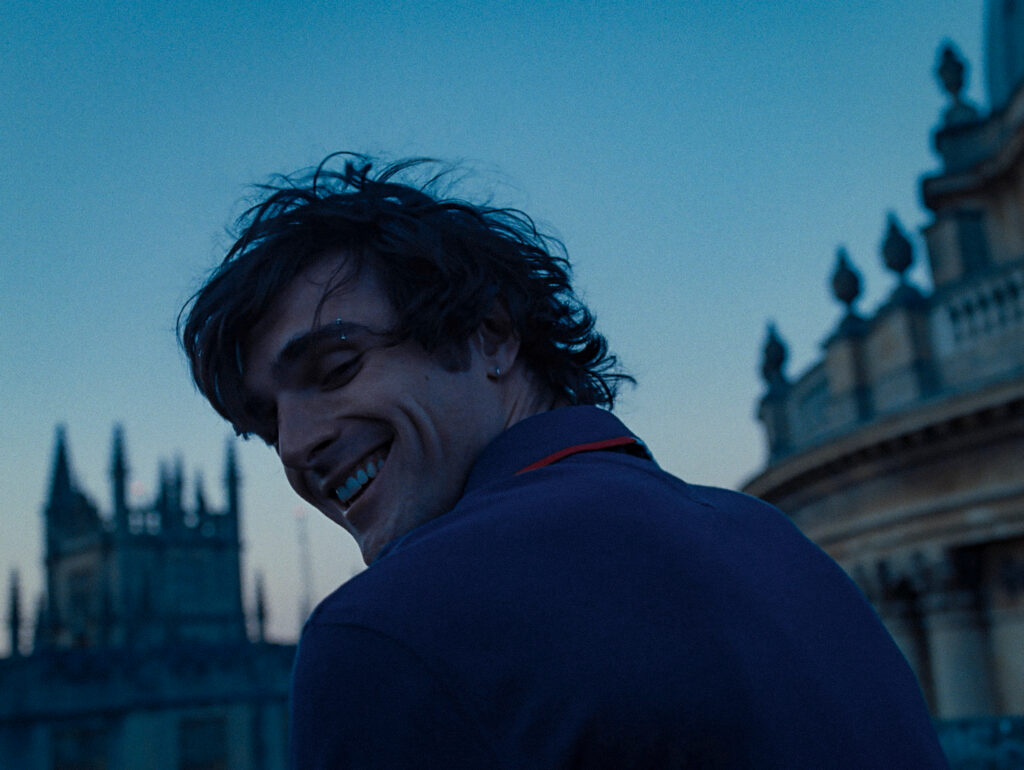
“He needs to be the person that we understand immediately why—the moment you see Felix, you think, ‘Okay, well sure. Whatever you want. Whatever you want, that’s fine,” she explained. “And it was about finding the person who had their own very different type of charisma that is kind of open—if Oliver is completely concealed, Felix is completely open. But it’s also open to the extent that we are told repeatedly throughout the film that he’s really a d–k. … But no one really minds because look at him, you know?”
In the film, Felix has an effortless magnetism about him, and Fennell credits Elordi’s natural ability as a performer to encapsulate the character on screen.
“It’s so hard to do a part like that. It’s so specific and unflashy,” said Fennell. “It’s such a detailed and beautiful performance that he gives … to make somebody profoundly unlikeable, who represents all sorts of things that we don’t like, and make them impossible to resist.”
Making a musical moment
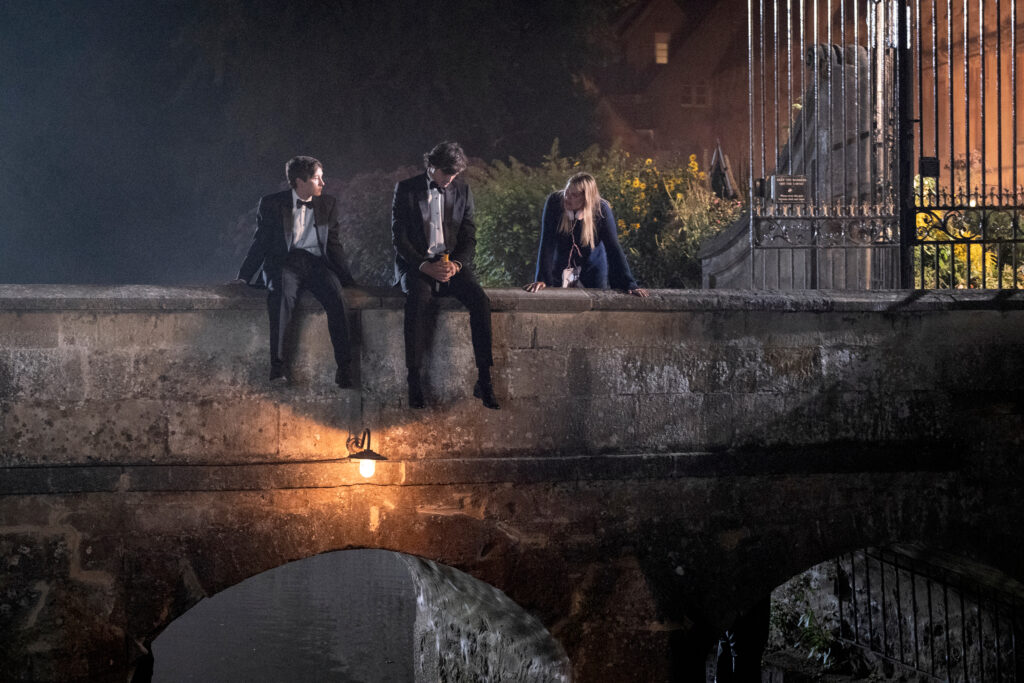
“Promising Young Woman” had its share of musical moments—from opening with Charli XCX’s “Boys” and Anthony Willis’ sinister orchestral cover of Britney Spears’s “Toxic” to the pharmacy sing-a-long between lovebirds Cassie and Ryan to Paris Hilton’s “Stars are Blind”—Fennell knows what it takes to create a memorable music moment in her films.
While not all of the music is embedded in the script, Fennell explained how her use of England’s coronation hymn, “Zadok the Priest,” at the start of the film was pivotal to both the musical elements of the film as well as the storytelling.
“And the score is born out of that coronation,” she said. “So this is a coronation movie up to point. It’s about a change of regime, maybe. So there are things like that that are very important.”
When it comes to finding the right songs, Fennell shared that typically, there are “very, very, very long, detailed conversations with all the music.” The film’s song selection for Fennell is driven by clear intention.
“If there’s a song, it has to be the perfect thing that absolutely isn’t just there for the sake it being a needle drop or a banger,” said Fennell. “That it says something very specific about the character who’s listening to it, or that it says something very, very specific about the movie itself.”
“Saltburn” is now playing in theaters.
